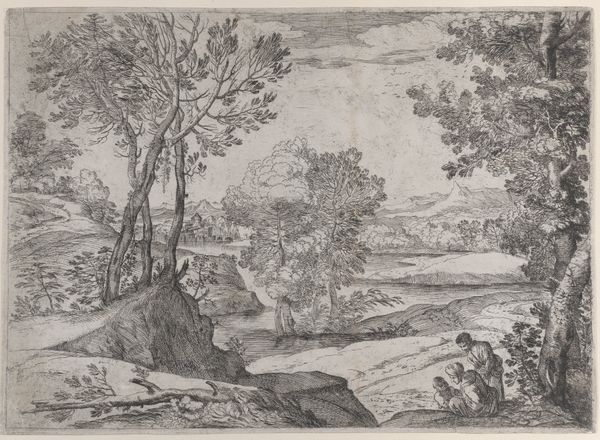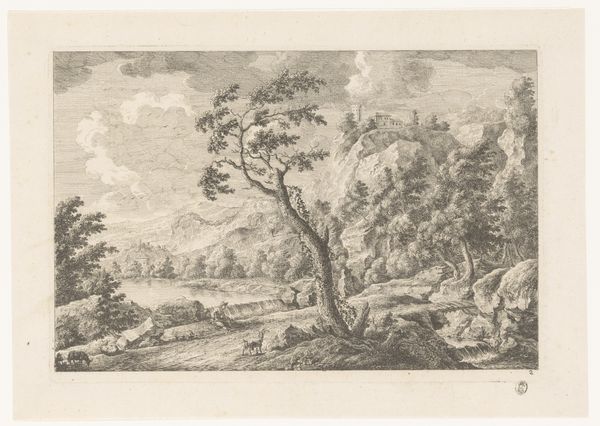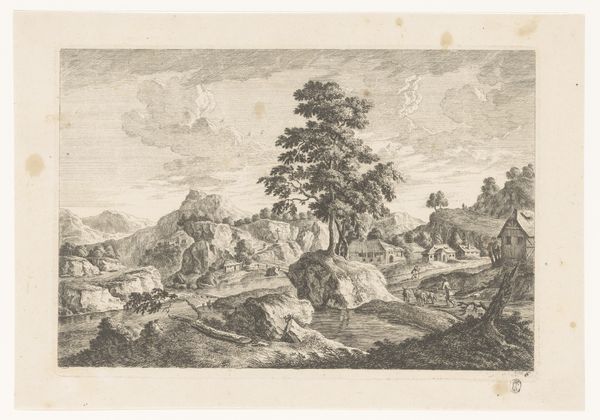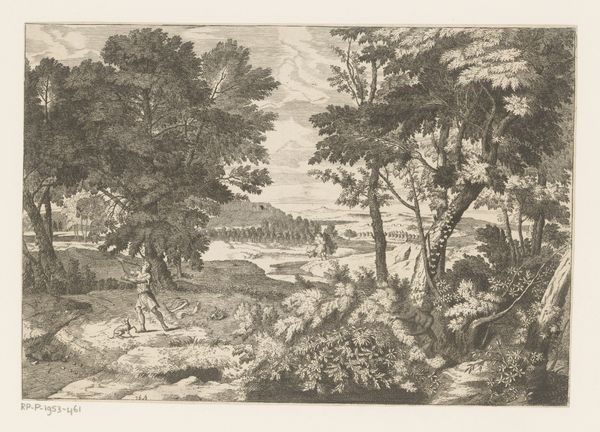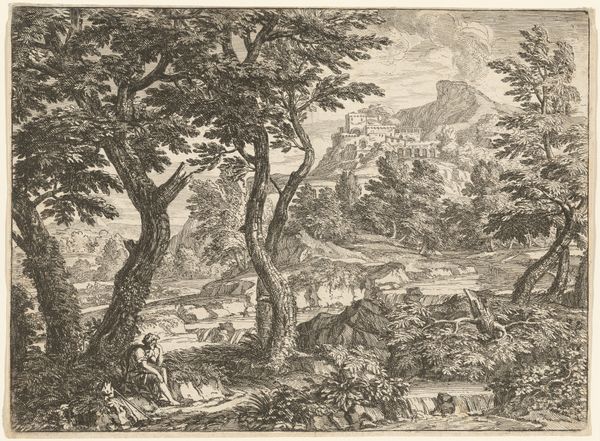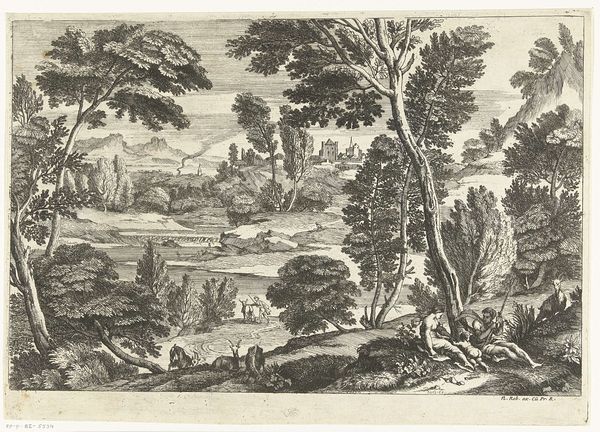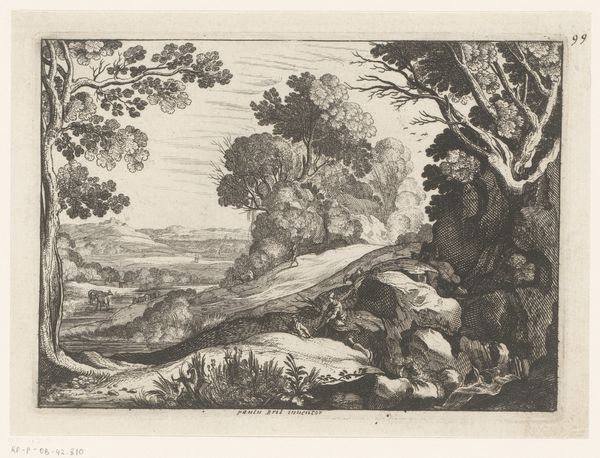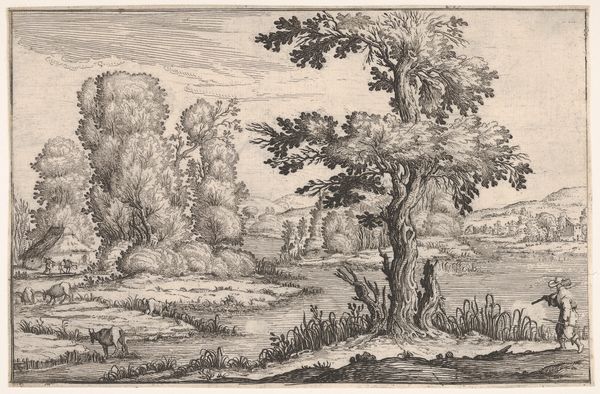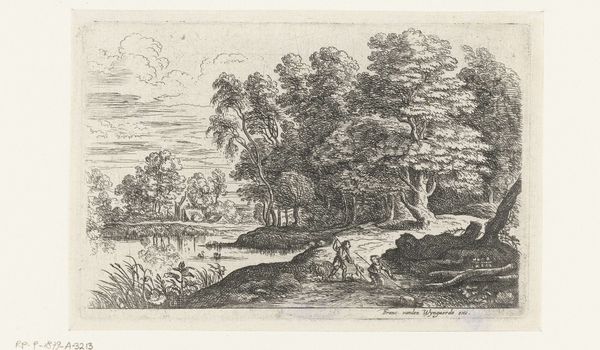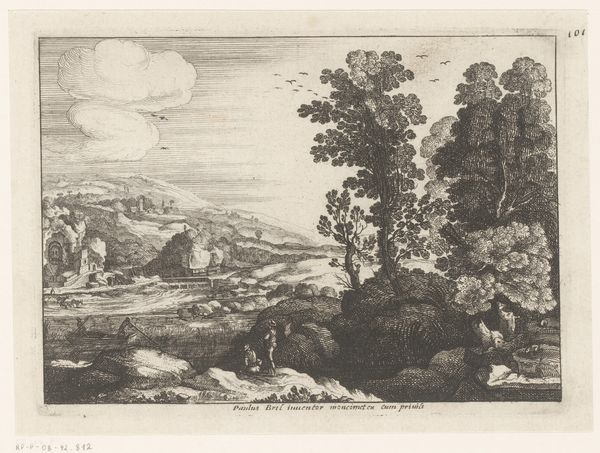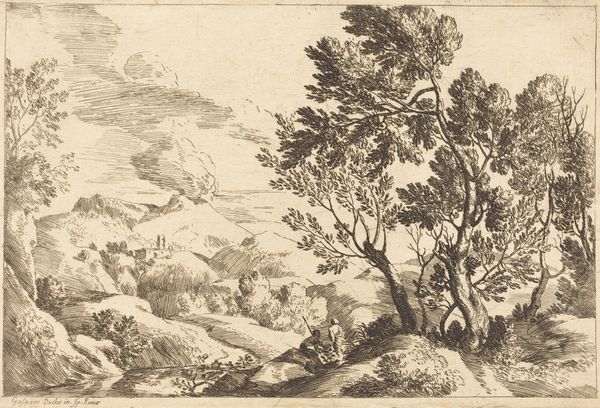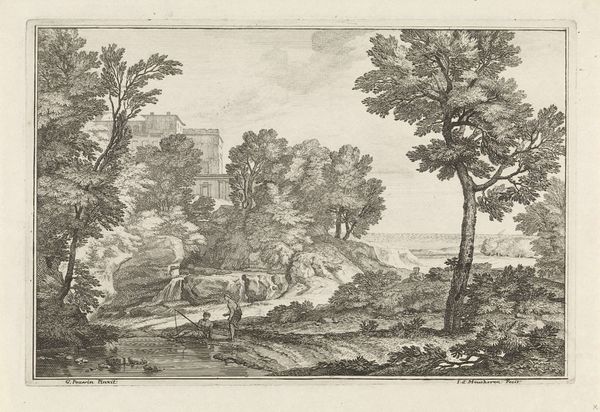
drawing, print, etching, ink, engraving
#
drawing
#
pen drawing
# print
#
etching
#
landscape
#
mannerism
#
ink
#
engraving
Dimensions: height 182 mm, width 258 mm
Copyright: Rijks Museum: Open Domain
Curator: We are standing before Antonio Tempesta's "Landschap met rivier en man te paard", a landscape scene created between 1593 and 1619. The artwork at the Rijksmuseum combines etching and engraving. Editor: It's stark, isn't it? Stark and surprisingly unsettling for a pastoral scene. The dense, almost chaotic linework creates a feeling of unrest. Curator: The composition is certainly dynamic. Consider the interplay between the densely hatched foreground and the more open, linear treatment of the distant mountains. And the figure on horseback, entering the scene from the lower left... Editor: He almost seems to be fleeing something, doesn't he? The positioning of the rider, combined with the oppressive density of the trees, feels symbolic of human disruption within the natural world. Is it a reflection on the increasing urbanization of the era, perhaps? Or the rising inequalities in society and challenges to nobility's privilege, depicted in a hurried and chaotic retreat? Curator: The artist's technical skill is on full display, though. Observe how Tempesta utilizes line weight and density to create a sense of depth and atmosphere. There's a definite mastery of form evident. This careful rendering suggests, to me, an ideal landscape. Editor: And what does an "ideal landscape" signify, if not an escapist fantasy for the privileged few? We see, even within so-called objective landscapes, perspectives that reinforce hierarchies and the illusion of ownership. What narrative might indigenous people present of this landscape at the time, for example? What kind of erasure might we not even recognize is implicit in this artwork? Curator: I appreciate you bringing up those issues and viewpoints. And indeed, an intersectional reading invites considerations previously dismissed as "irrelevant". But as a standalone artifact, consider the architecture within the work; the artist positions buildings and structures to imply depth using a sophisticated interplay between sharp foreground detail and the more nebulous architecture of the mid-ground. Editor: I concede there's much to appreciate in Tempesta's technique and spatial play, of course, and there are many valid views on the piece as a standalone work; what is of greater interest to me, though, are its social implications and narrative omissions when viewed through a contemporary critical lens. Curator: Indeed. Well, there’s a lot to be gained from approaching works from all kinds of valid standpoints. Thanks for sharing your perspective; that definitely gave me a lot to consider. Editor: My pleasure. Let's look at the next piece, shall we?
Comments
No comments
Be the first to comment and join the conversation on the ultimate creative platform.
